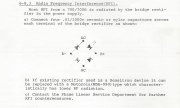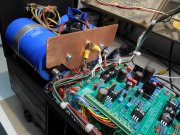Thanks J!m;
I may need a bigger oxy-acetylene torch to finish this amp project.
Hi Joe;
The angle was not electrically connected to the chassis. I just connected it and found no difference in hum/buzz. I actually first noticed the problem with the amp closed up in the listening room. Background noise in the workshop masked the issue initially.
Hard to recollect the status of the amp when you did your listening room test, too many things flying around and no results summary for each.
Could it be that you had the center tap of the transformer tied to the 3rd wire of the IEC at that time?

![DSCN1707[1].JPG](/data/attachments/36/36122-d0451b2f3172725fe4f4ffb9a5f483e9.jpg?hash=0EUbLzFycl)




